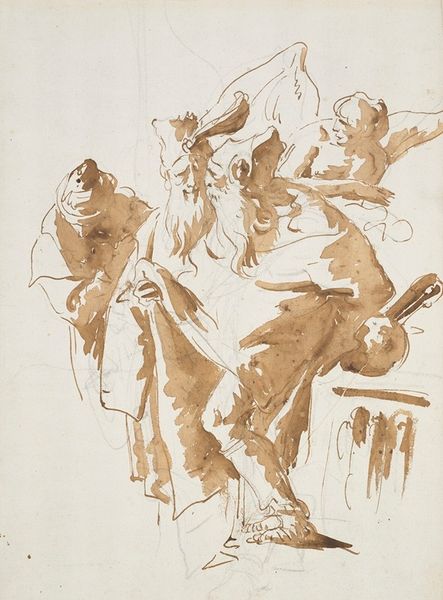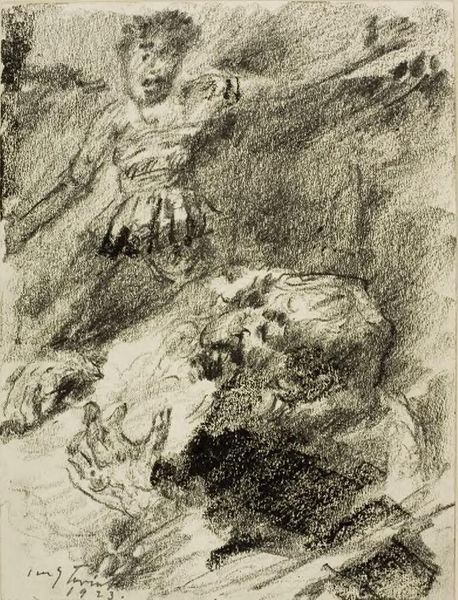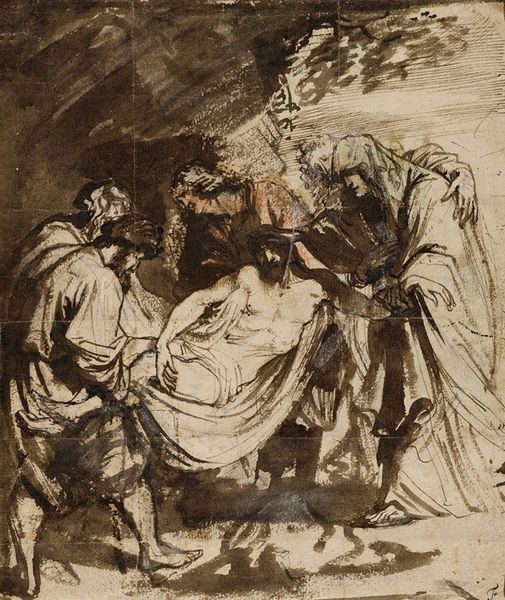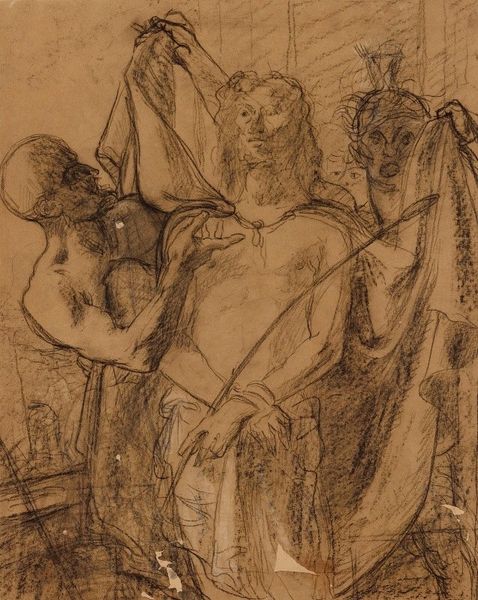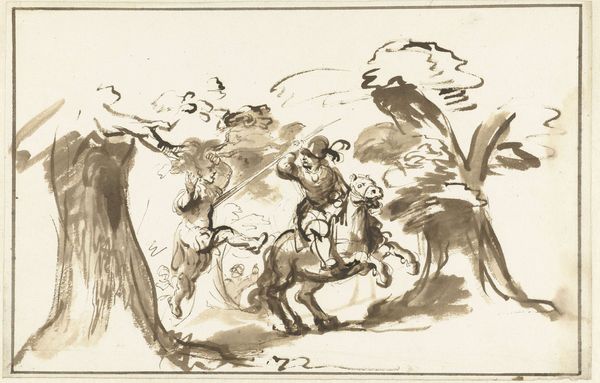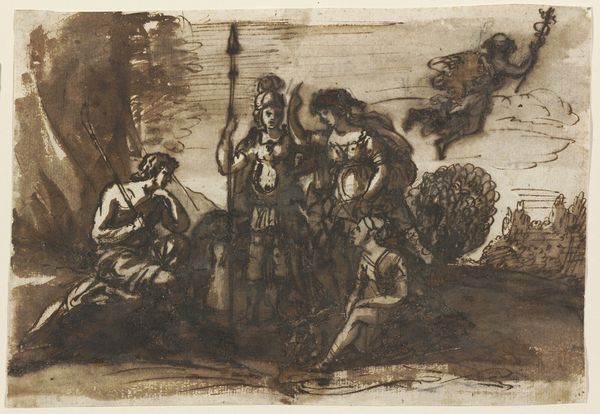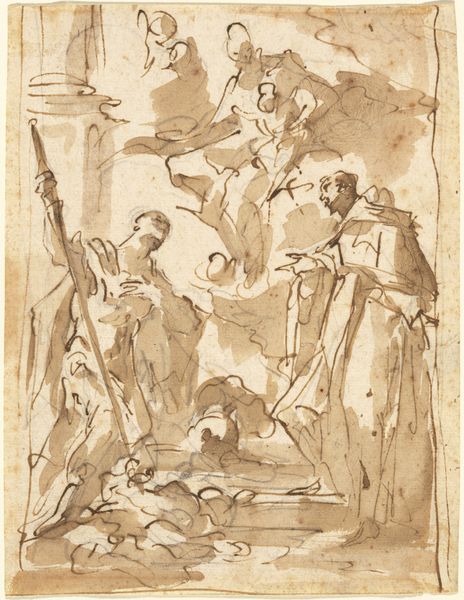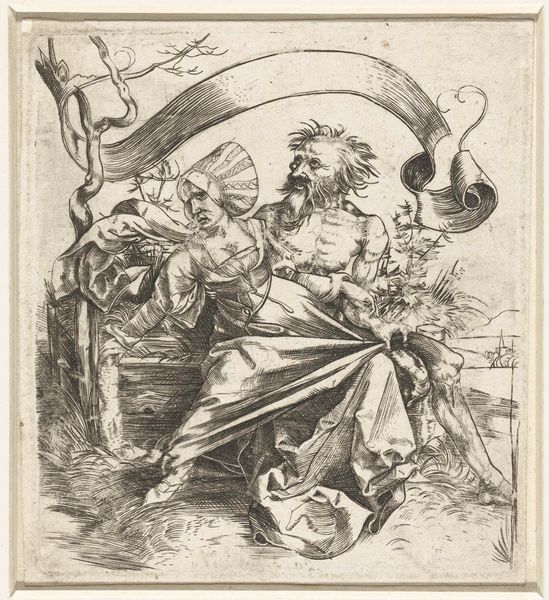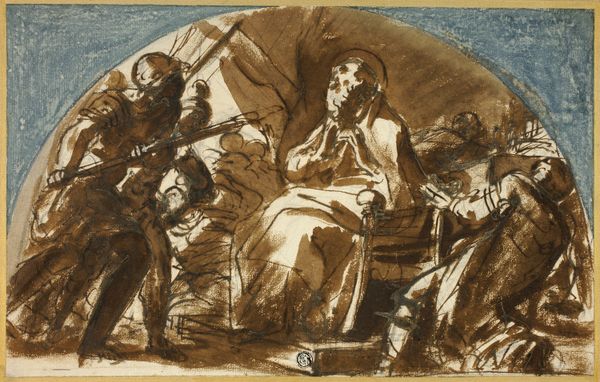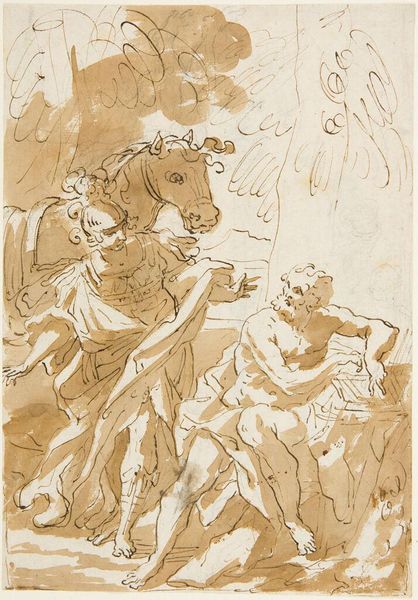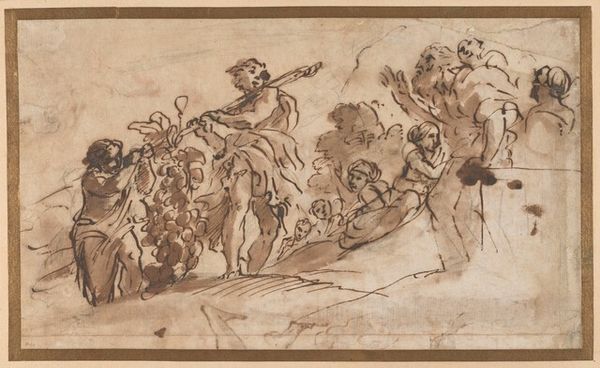
drawing, ink
#
drawing
#
allegory
#
baroque
#
ink painting
#
charcoal drawing
#
figuration
#
ink
#
history-painting
Copyright: Public Domain: Artvee
Curator: Salvator Rosa, likely created between 1615 and 1673, presents us with "Three Figures around a Globe." It's executed in ink, a medium lending itself to dramatic chiaroscuro. Editor: My immediate impression is struggle and tension. The figures seem almost frantic, their bodies rendered with energetic, swirling lines around this massive globe. What's gripping them so tightly? Curator: Well, allegorically speaking, these figures could represent Europe, Asia, and Africa—the known world at the time. Notice how they strain and contort to maintain their hold on this shared world. The use of ink suggests a sense of urgency, perhaps mirroring the rapidly shifting geopolitical landscape of the 17th century and production limitations imposed on the artist. Editor: The globe itself is fascinating. Its outlines are surprisingly delicate compared to the figures' frantic gestures. It seems less a stable object of possession and more a fragile thing threatened by human action. The mapmakers also captured, very accurately, what would have been the 'state of the art' world at the time. You could also suggest the imagery could imply that, together, they are changing it somehow. Curator: Indeed. And ink, as a material, speaks to this. The transparency of the ink washes allows Rosa to model volume but also to show pentimenti and underdrawing. Editor: So, the drawing becomes an act of simultaneous revelation and obscuration, much like how power operates in the world? Curator: Precisely. And that speaks to the distribution and ownership, of both geographic regions and materials from the earth—as they all become tradable resources to amass personal fortunes. What materials and laborers do they exploit to do this? Editor: Perhaps Rosa is hinting at an inherent instability—or perhaps, in the fashion of his time, at the need for Europe to collaborate rather than fight? To ensure global power—at least power-sharing with other powerful regional actors? Curator: It forces us to ask: who controls the trade routes represented on the globe, and what means were employed to map and secure these resources? It reveals those truths but covers the violence required to acquire it all at once. Editor: Ultimately, this image resonates beyond its time. The fragility of our planet and the struggle to manage its resources remains a very current issue. Curator: Agreed, though its production context may be quite remote, the underlying thematic considerations feel very modern.
Comments
No comments
Be the first to comment and join the conversation on the ultimate creative platform.
